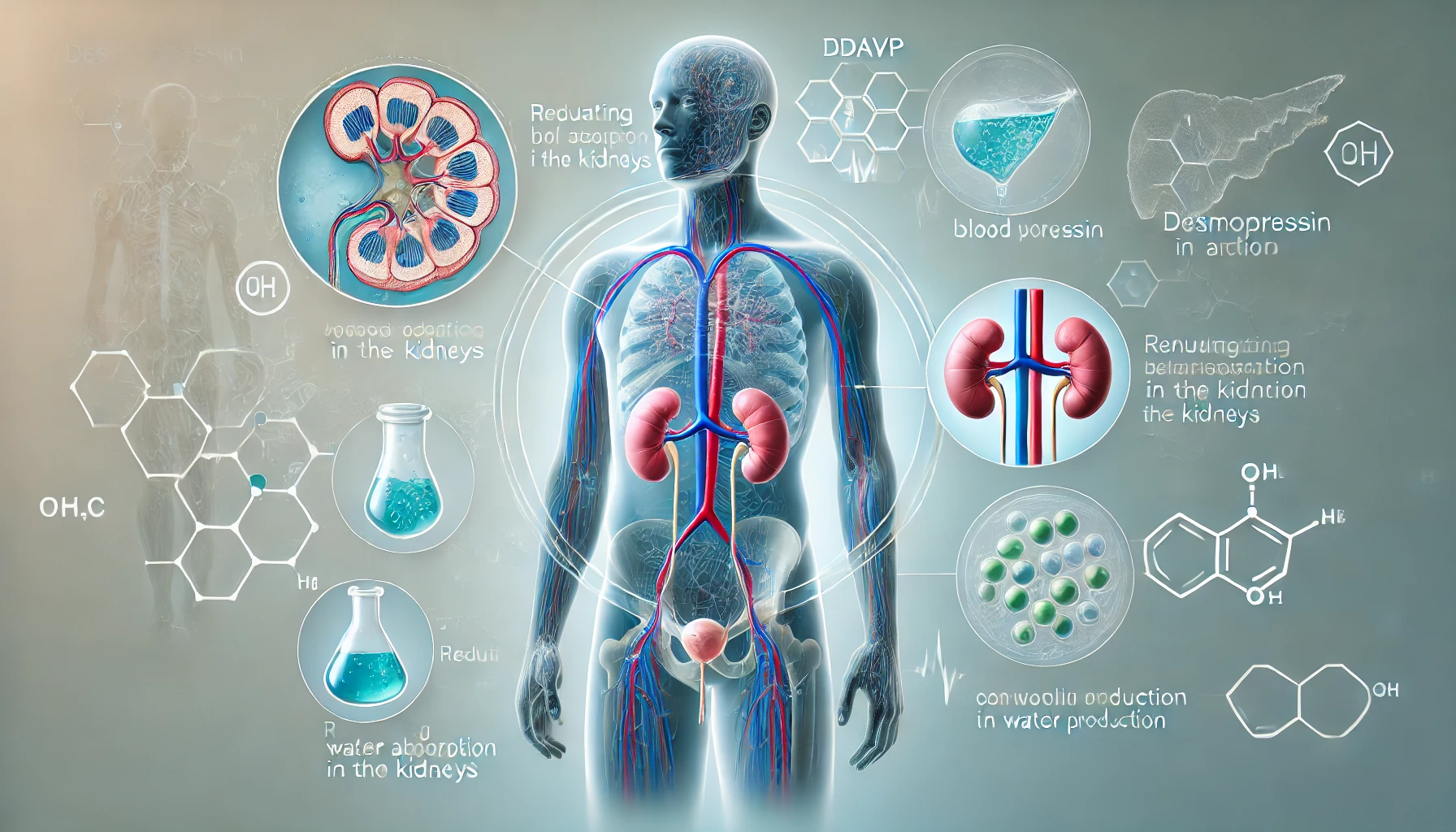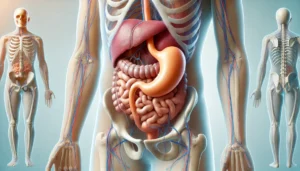DDAVP, also known as desmopressin, is a medication used to treat a variety of health conditions. Whether it’s to help control bedwetting, manage diabetes insipidus, or treat bleeding disorders like hemophilia, DDAVP plays an essential role in many people’s lives. But what exactly is DDAVP, and how does it work? This article will explain everything you need to know about DDAVP in simple terms so that even a 5-year-old can understand it.
What Is DDAVP?
DDAVP is a synthetic (man-made) version of a hormone called vasopressin. This hormone is naturally produced by our bodies to help control the amount of water in our blood and regulate our urine production. In some cases, our bodies don’t make enough vasopressin, or the vasopressin we have doesn’t work properly. That’s where DDAVP comes in. Doctors prescribe DDAVP to help people who need more of this important hormone.
How Does DDAVP Work?
DDAVP works by mimicking the action of the natural hormone vasopressin. When you take DDAVP, it helps your kidneys absorb water, reducing the amount of urine your body produces. This is especially helpful for people who have a condition called diabetes insipidus, where the body can’t manage water balance correctly. DDAVP can also reduce the chances of bedwetting in children and help with bleeding disorders by increasing certain clotting factors in the blood.
Why Is DDAVP Prescribed?
There are several conditions where DDAVP might be prescribed:
- Diabetes Insipidus: This condition happens when your body can’t hold on to water properly. People with diabetes insipidus produce too much urine, making them dehydrated easily. DDAVP helps by reducing the amount of urine the body makes.
- Bedwetting (Enuresis): Some children (and even some adults) wet the bed at night. DDAVP helps by controlling the bladder and reducing the amount of urine produced while they sleep, preventing accidents.
- Hemophilia and Von Willebrand Disease: These are bleeding disorders where blood doesn’t clot properly. DDAVP can help increase certain proteins in the blood that are needed to form clots, reducing excessive bleeding.
How to Take DDAVP
DDAVP can be taken in several forms, depending on the condition being treated. The most common forms include:
- Nasal Spray: This is sprayed into the nostrils to deliver the medication directly into the bloodstream.
- Tablets: These are swallowed with water and are often used to treat bedwetting or diabetes insipidus.
- Injection: For people with bleeding disorders, DDAVP can be injected directly into a vein to help with blood clotting.
The form and dose of DDAVP prescribed by your doctor will depend on the condition being treated and your specific needs.
Side Effects of DDAVP
Like all medications, DDAVP can have side effects. Some people may experience:
- Headache: One of the most common side effects is a mild headache. It usually goes away on its own.
- Nausea: Some people might feel a little sick to their stomach after taking DDAVP.
- Low Sodium Levels: Since DDAVP helps your body retain water, it can sometimes cause the sodium (salt) levels in your blood to drop. This can be dangerous if not monitored by a doctor.
It’s important to follow your doctor’s instructions carefully and report any side effects you experience.
Who Shouldn’t Take DDAVP?
While DDAVP is safe for most people, there are some cases where it should not be used. People with certain medical conditions or those who take other medications that affect water balance should be cautious. Always inform your doctor about any health problems or medications you are taking before starting DDAVP.
How Long Does DDAVP Take to Work?
DDAVP can start working quickly, depending on the form you use. For example, if you use the nasal spray or injection, you may see results within 30 minutes to an hour. Tablets might take a little longer to work, but they are still very effective. Most people notice a difference within a few hours.
DDAVP for Bedwetting
One of the most common uses of DDAVP is to help children (and sometimes adults) who wet the bed at night. It helps reduce the amount of urine produced during sleep, which can prevent nighttime accidents. DDAVP isn’t a cure for bedwetting, but it can help manage the condition while the child grows out of it. In many cases, children eventually stop bedwetting without needing medication.
DDAVP for Bleeding Disorders
For people with bleeding disorders like hemophilia and Von Willebrand Disease, DDAVP can be a lifesaver. By increasing the amount of clotting factors in the blood, it helps to stop excessive bleeding after surgery or injuries. It’s often given in a hospital setting through an injection, but some people may be able to use the nasal spray form at home.
What to Do If You Miss a Dose of DDAVP
If you miss a dose of DDAVP, it’s important not to panic. If you remember shortly after your scheduled dose, take it as soon as possible. However, if it’s close to the time for your next dose, skip the missed dose and continue with your regular schedule. Don’t double up on doses, as this can lead to unwanted side effects.
Stopping DDAVP
In some cases, your doctor may tell you to stop taking DDAVP once your condition improves or if you no longer need it. Stopping the medication should always be done under your doctor’s guidance to ensure it’s safe for you to do so. Abruptly stopping DDAVP can sometimes lead to a return of symptoms, so it’s best to taper off under medical supervision.
How to Store DDAVP
DDAVP should be stored in a cool, dry place, away from direct sunlight and moisture. If you’re using the nasal spray, it may need to be stored in the refrigerator, but make sure to check the instructions provided with your medication. Keep all forms of DDAVP out of reach of children and pets.
Is DDAVP Safe?
Yes, DDAVP is considered safe for most people when taken as prescribed by a doctor. However, like all medications, it’s important to follow the instructions carefully to avoid potential side effects or complications. Regular check-ups with your doctor will help ensure that the medication is working properly and that there are no issues.
Final Thoughts
DDAVP is a powerful and helpful medication for many people dealing with conditions like diabetes insipidus, bedwetting, and bleeding disorders. By working like the natural hormone vasopressin, it helps regulate water balance, prevent accidents, and even manage bleeding. If you or someone you know has been prescribed DDAVP, following your doctor’s advice and understanding how the medication works will make treatment much easier.













